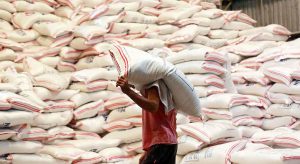MSME loans used as reserve compliance reach P263B in 2022

BANKS lent P263.1 billion to micro, small, and medium enterprises (MSMEs) as alternative compliance with reserve requirements as of December 2022, the Bangko Sentral ng Pilipinas (BSP) said.
This is around 15.9% of the total required reserves and was well above the P8.7 billion in MSME loans reported on April 30, 2020, the BSP said in its Philippine Financial System report for the second semester of 2022.
On the other hand, banks extended P72.9 billion in loans to eligible large enterprises as alternative compliance. This is about 4.4% of the total required reserves for the same reserve week.
First implemented in April 2020 at the height of the pandemic, the BSP allowed MSME loans to be counted as part of banks’ reserve requirements in a bid to boost lending to the sector.
The central bank capped loans to MSME and large enterprises not affiliated with conglomerates that banks could use as alternate reserve compliance at P300 billion and P425 billion, respectively.
These relief measures remain in place to encourage banks to lend or restructure loans to MSME borrowers, the BSP said.
“These include the reduced credit risk weight of loans granted to MSMEs and the utilization of peso-denominated loans to MSMEs and large enterprises as alternative compliance with the reserve requirements against deposit liabilities and deposit substitutes,” it said.
“The extension of these relief measures until end-June 2023 will encourage banks to continue to support the financing requirements of credit-worthy MSMEs,” the BSP added.
Philippine banks extended P493.5 billion in credit to MSMEs at end-2022, 6.6% higher than the P463.1 billion in the same period a year prior, the report showed.
By banking group, universal and commercial banks lent P390.9 billion to MSMEs. This was followed by rural and cooperative banks, which lent P52.7 billion.
BSP Governor Felipe M. Medalla earlier said the central bank is prepared to cut banks’ reserve requirement ratio (RRR) by end-June to help offset the impact of the relief measures’ end.
“Faced with the expiration of the measure considering loans to MSMEs as alternative RR compliance by June, we may also cut reserve requirements to avoid excessive tightening in monetary conditions,” Mr. Medalla said last week.
The RRR for universal and commercial banks is currently at 12%, one of the highest in the region. Reserve requirements for thrift and rural lenders are at 3% and 2%, respectively.
The central bank targets to cut big banks’ RRR to single-digit levels by the end of the year.
A cut in reserve ratios is a move intended to be an operational adjustment to facilitate the BSP’s shift to market-based instruments for managing liquidity in the financial system, particularly the term deposit facility and the BSP securities.
Meanwhile, latest BSP data showed banks disbursed P848 billion in loans to the agriculture and agrarian (agri-agra) sectors as of June 2022. This is 7.4% higher from the P789.7 billion in the same month in 2021.
“However, the banking system still fell short of the mandated credit at 9.5% for other agricultural and 0.8% for agrarian reform vis-à-vis the minimum required of 15% and 10%, respectively,” the central bank said.
“With the passage of The Agriculture, Fisheries and Rural Development Financing Enhancement Act of 2022 or Republic Act No. 11901 in July 2022, amending the R.A. No 10000, the BSP expects that the new law will strengthen rural development and improve the well-being of agricultural and rural community beneficiaries,” it said.
Under the amended law, lenders will no longer be required to set aside 10% and 15% of their loanable funds for agrarian reform credit and other agricultural credit, respectively. Instead, banks shall set aside at least 25% of their total loanable funds for agriculture, fisheries, and rural development financing. — K.B. Ta-asan




